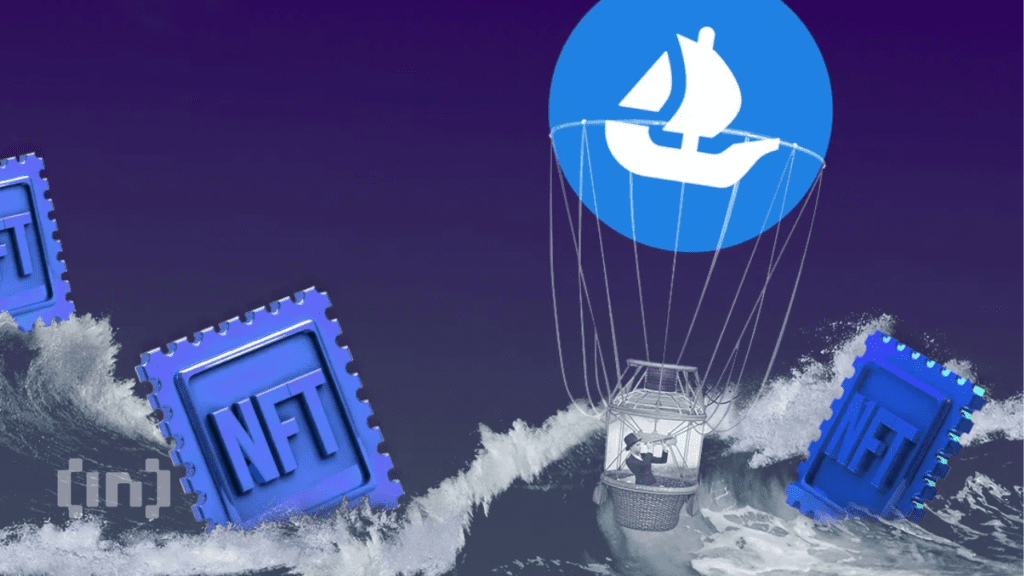Not all non-fungible tokens (NFTs) are the same. Some bear unique characteristics that are not widely shared. Sometimes, collectors stumble upon such gems and would want the value to reflect such. But it’s been hard to separate the rare from your regular NFT.
Now, non-fungible token rankings are being made easier on OpenSea thanks to the launch of a new tool called “OpenRarity.” The American marketplace described their new idea as “rarity”, a method that standardizes unique digital images.
NFTs for the particular collector
“We use ‘rarity’ ranking to describe the relative scarcity of one non-fungible token’s attributes compared to another in the same collection,” OpenSea elaborated, in a blog post.
“An NFT with rare attributes will have a lower rarity ranking (such as 1 or 2) than an NFT that shares attributes with thousands of others in the collection,” it added.
Rarity is strongly correlated with value. That’s the reason exclusivity is important for NFT collectors. It has been hard to put a finger on the exclusivity of the features of one NFT piece against the other in the absence of a standardized ranking mechanism.
The result has been chaos, says OpenSea. “When rarity rankings vary across platforms and use different methodologies, it can cause confusion for buyers and sellers and make it difficult to use rarity for purchase and sale decisions,” it said.
The plan is to build “a unified, open, transparent and reproducible standard for rarity rankings across the NFT industry.”
Why rank your NFT?
OpenRarity is a joint venture between OpenSea, icy.tools, Curio, and PROOF. Users have the option to show whether their collections are rare or not. A collection that opts in will have to show a number marking their rarity ranking on the item page and on the collection page.
OpenSea said the classification is crucial in markets that are interoperable, where different NFTs can be interchanged.
“If you hover over the number, you’ll see the percentage ranking. OpenRarity rarity rankings directly reflect the creator published attribute data, and can change over time if the creator makes changes to item metadata,” OpenSea detailed.
Pudgy Penguins, one of the earliest NFT collections on OpenRarity, has enlisted 8,888 non-fungible tokens of different attributes. According to a description of the collection on Rarity Tools, Pudgys “embody love, empathy, and compassion”.
They “are a beacon of good vibes and positivity for everyone. Each holder receives exclusive access to experiences, events, IP licensing opportunities, and more,” it says.
Pudgy Penguin’s floor price averaged 3.8 ETH, or around $4,900, on Friday, 2.7% on the day. The collection has had 66 ETH (~ $86,000) in sales in the last 24 hours, a 30% decline from the previous day, according to data from NFT Floor Price.
Cool Cats, another collection, has 9,999 randomly generated non-fungible tokens on OpenRarity. The concept is that holders of the NFT can participate in exclusive events such as NFT claims, raffles, community giveaways, and more.
At the time of writing, Cool Cats sold for an average price of 2.95 ETH (~ $3,800) each, rising 7.2% in the previous 24 hours, with volume of 96.89 ETH (~ $126,000).
Rarity is not a magic pill
However, a recent study by the Stevens Institute of Technology found that rarity may not be the magic pill for NFTs. There are several potential demerits, it said.
Jordan Suchow, a cognitive scientist who led the study, warned that the buzz surrounding rare non-fungible tokens needs to be managed, as there can be boredom on the part of collectors.
“Because NFT trading records are public, they offer a remarkable chance for us to look at why people perceive certain things as valuable, and how those changes over time,” said Suchow.
Suchow studied collectors of the Bored Ape Yacht Club and observed diminished interest in the NFTs as time progressed.
An accessorized ape is considered rare, compared to a plain-clothed ape. Suchow said this might be interesting in early days, but as one`s collection continues to grow, the apes may end up appearing like the same thing.
“It’s a bit like stamp collecting: the stamps all look the same, so if there’s a printing error or some other rare feature that sets a stamp apart, people will pay far more for it,” he explained.
“Today, a newcomer to Bored Ape trading sees these rare apes everywhere and perceives them to be much more common than in fact they are.”
Continuing, Suchow observed:
“If a person wants to learn what a dog is they could do so by going to a dog park and looking at a range of common animals. Going to an experimental breeder and looking only at rare breeds, on the other hand, would skew their perception of the category and of how much any given dog is worth.”
The scientist concludes that rarity could become self-defeating as it deters trade in ordinary pieces which make up the bulk of the market.
Not a new concept
Rarity is not a new concept. In traditional art and music, there is something called ‘collector`s items, which are not produced for the mass market.
Hip Hop group Wu-Tang Clan sold their album, “Once Upon A Time In Shaolin,” to a crypto group for NFTs worth around $4 million. The album`s content is yet to be accessed by the mass market.
For Be[In]Crypto’s latest Bitcoin (BTC) analysis, click here
Disclaimer
All the information contained on our website is published in good faith and for general information purposes only. Any action the reader takes upon the information found on our website is strictly at their own risk.


